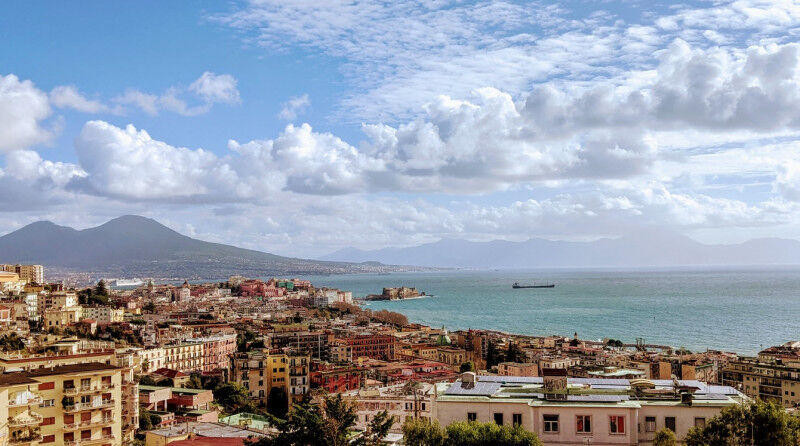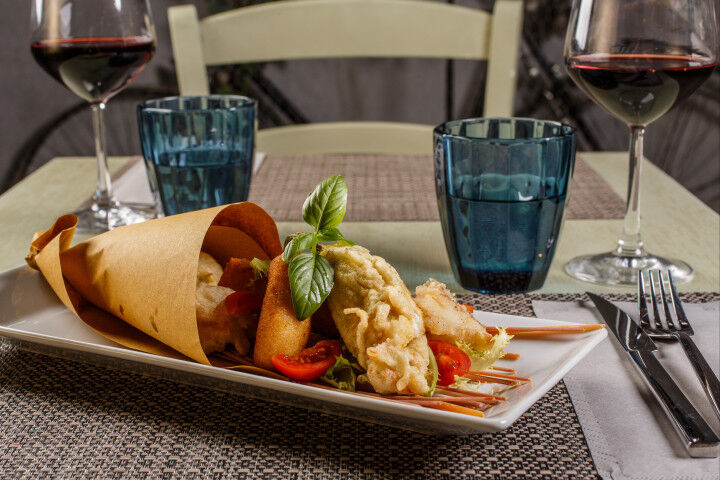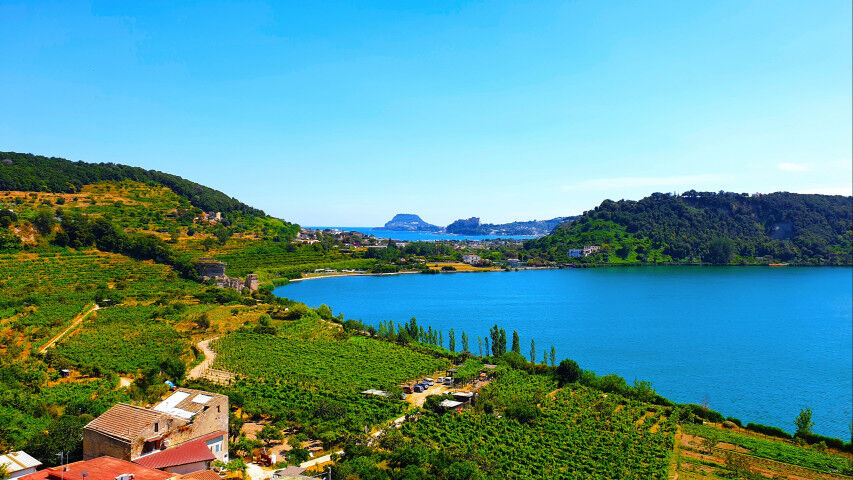What foods is Naples famous for?
Struffoli and Mostaccioli, cuoppo, Minestra Maritata, Roccoccò.
Making life filled with pleasant yet difficult choices, selecting just five things to taste and savor in Naples is as complex.
Christmas Sweets to Sweeten Your Palates
While nobody would ever dream of denying panettone and pandoro a place of pride at any Neapolitan holiday table, traditional local Christmas desserts that are omnipresent in Neapolitan holiday tables are Struffoli and Mostaccioli.
Struffoli are small circular shapes of sweet dough fried in oil. The balls are then doused in honey, colored sugar almonds and candied fruit for an overwhelming siren song for those with a sweet tooth.
Mostaccioli instead are diamond-shaped cakes, with a crunchy consistency and an intense almond flavor. Instantly recognized for its dark hues, the cakes are traditionally covered with a chocolate glaze.
What are some other desserts to enjoy? Don’t miss Roccoccò, a round donut-shaped cookie made with a mixture of almonds, orange peel, and other spices. As the cookie does have a tough consistency, the holiday biscuit is typically dipped in dessert liqueurs or fortified wines.
Raffiuoli or Neapolitan Cassatine are two more holiday favorites, although their popularity is lagging somewhat. However, these desserts do find favor with culinary traditionalists, who won’t give up so quickly on their delicate goodness. Both are cakes made from a disc of sponge cake, a veil of apricot jam, and covered with white sugar icing.
Several local pastry shops have begun experimenting with Raffaiuoli "a Cassata," or discs of dough filled with sweet ricotta cream, chocolate, and candied fruits.
Classic Neapolitan Street Food
Naples enjoys a particularly moderate climate, in which temperatures are never too cold to enjoy a stroll and a taste of local street food. In fact, in Naples, unlike much of northern Italy, seeing people eating while walking on the streets is quite common.
While today’s food scenes are filled with street food options, in Naples, it’s been part of the local cultural scene forever.
One of the most popular versions includes the "cuoppo.” This option is a sheet of paper that can contain a wide variety of differently cooked goods. Beginning with the ever-popular seafood cuoppo, we find a paper cone filled with incredible local delicacies ranging from fried squid, anchovies, shrimp and cuttlefish. A land-based cuoppo instead will generally include mozzarella, vegetables, and polenta, all fried following local dictates.
If you’re in the mood for something sweet, you can’t go wrong with a sweet cuoppo, filled with fried zeppoline either plain or filled with feather-light pastry cream.
For pizza-lovers, Neapolitan street food tradition has something in there for you, too. “Pizza a Portafoglio" is a delicious, smaller Margherita pizza folded into four sheets, and put in a greased paper wrapper, to make eating on the go easier and less messy. Don’t miss a taste of Fried Pizza, stuffed with locally-produced Ricotta cheese, mozzarella and boiled ham.
One more pizza-like street treat is the “Parisienne," a puff pastry stuffed with tomato and cooked ham.
The Neapolitan table’s Queen - Vegetables
Today’s culinary world is focused so much on green, whether it be ingredients or sustainability. The Neapolitan tradition, thanks to the fertile soils just outside of Naples, is rich in green solutions.
One Christmas dish expresses this notion perfectly, the “Minestra Maritata.” In this dish, local, seasonal vegetables marry local meat ingredients, giving way to a traditional dish that can’t be missed at Christmastime.
One of the oldest dishes in the Neapolitan culinary tradition, it’s believed the dish dates back to Apicius' De Conquinaria, although some sources prefer to cite Spanish roots dating back to the 1300s.
The classic Maritata recipe includes a combination of seven local vegetables, whereas meat cuts can be varied. The vegetables typically used in this dish include Scarolelle, Chard, Chicory, Borage, Greek Cauliflower, Black Rabe Broccoli and Savoy Cabbage, Meat cuts can include different cuts of Beef, Chicken and classic Neapolitan sausages made with hand-diced pork.



